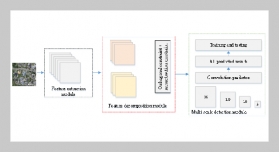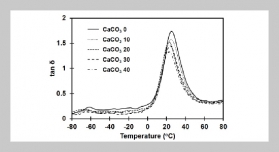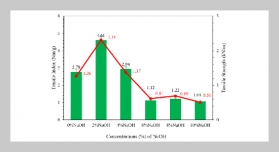REFERENCES
- [1] Carta, J. A., Ramirez, P. and Velazquez, S., “A Review of Wind Speed Probability Distributions Used in Wind Energy Analysis Case Studies in the Canary Islands,” Renewable and Sustainable Energy Reviews, Vol. 13, pp. 933�955 (2009). doi: 10.1016/j.rser.2008.05.005
- [2] Celik, A. N., Makkawi, A. and Muneer, T., “Critical Evaluation of Wind Speed Frequency Distribution Functions,” J. Renewable and Sustainable Energy, Vol. 013102, pp. 1�16 (2010). doi: 10.1063/1.329 4127
- [3] Ucar, A. and Balo, F., “Investigation of Wind Characteristics and Assessment of Wind-Generation Potentiality in Uludag-Bursa, Turkey,” Applied Energy, Vol. 86, pp. 333�339 (2009). doi: 10.1016/j.apenergy. 2008.05.001
- [4] Akdag, S. A. and Dinler, A., “A New Method to Estimate Weibull Parameters for Wind Energy Applications,” Energy Conversion and Management, Vol. 50, pp. 1761�1766 (2009). doi: 10.1016/j.enconman. 2009.03.020
- [5] Jowder, F. A. L., “Wind Power Analysis and Site Matching of Wind Turbine Generators in Kingdom of BAHRAIN,” Applied Energy, Vol. 86, pp. 538�545 (2009). doi: 10.1016/j.apenergy.2008.08.006
- [6] Raichle, B. W. and Carson, W. R., “Wind Resource Assessment of the Southern Appalachian Ridges in the Southeastern United States,” Renewable and Sustainable Energy Reviews, Vol. 13, pp. 1104�1110 (2009). doi: 10.1016/j.rser.2007.12.005
- [7] Kwon, S. D., “Uncertainty Analysis of Wind Energy Potential Assessment,” Applied Energy, Vol. 87, pp. 856�865 (2010). doi: 10.1016/j.apenergy.2009.08.038
- [8] Zhou, W., Yang, H. X. and Fang, Z. H., “Wind Power Potential and Characteristic Analysis of the Pearl River Delta Region, China,” Renewable Energy, Vol. 31, pp. 739�753 (2006). doi: 10.1016/j.renene.2005. 05.006
- [9] Seguro, J. V. and Lambert, T. W., “Modern Estimation of the Parameters of the Weibull Wind Speed Distribution for Wind Energy Analysis,” J Wind Eng Indus Aerod, Vol. 85, pp. 75�84 (2000). doi: 10.1016/ S0167-6105(99)00122-1
- [10] Akpinar, E. K. and Akpinar, S., “Determination of the Wind Energy Potential for Maden-Elazig, Turkey,” Energy Conversion and Management, Vol. 45, pp. 2901�2914 (2004). doi: 10.1016/j.enconman.2003. 12.016
- [11] Celik, A. N., “A Statistical Analysis of Wind Power Density Based on the Weibull and Rayleigh Models at the Southern Region of Turkey,” Renew Energy, Vol. 29, pp. 593�604 (2003). doi: 10.1016/j.renene.2003. 07.002
- [12] Sulaiman, M. Y., Akaak, A. M., Wahab, M. A., Zakaria, A., Sulaiman, Z. A. and Suradi, J., “Wind Characteristics of Oman,” Energy, Vol. 27, pp. 35�46 (2002). doi: 10.1016/S0360-5442(01)00055-X
- [13] Yang, H. X., Lu, L. and Burnett, J., “Weather Data and Probability Analysis of Hybrid Photovoltaic-Wind Power Generation Systems in Hong Kong,” Renewable Energy, Vol. 28, pp. 1813�1824 (2003). doi: 10.1016/S0960-1481(03)00015-6
- [14] Chang, T. J., Wu, Y. T., Hsu, H. Y., Chu, C. R. and Liao, C. M., “Assessment of Wind Characteristics and Wind Turbine Characteristics in Taiwan,” Renewable Energy, Vol. 28, pp. 851�871 (2003). doi: 10.1016/ S0960-1481(02)00184-2
- [15] Dorvlo, A. S. S., “Estimating Wind Speed Distribution,” Energy Conversion and Management, Vol. 43, pp. 2311�2318 (2002). doi: 10.1016/S0196-8904(01) 00182-0
- [16] Akpinar, S. and Akpinar, E. K., “Wind Energy Analysis Based on Maximum Entropy Principle (MEP)- Type Distribution Function,” Energy Conversion and Management, Vol. 48, pp. 1140�1149 (2007). doi: 10.1016/j.enconman.2006.10.004
- [17] Shamilov, A., Kantar, Y. M. and Usta, I., “Use of MinMaxEnt Distributions Defined on Basis of MaxEnt Method in Wind Power Study,” Energy Conversion and Management, Vol. 49, pp. 660�677 (2008). doi: 10.1016/j.enconman.2007.07.045
- [18] Carta, J. A. and Mentado, D., “A Continuous Bivariate Model for Wind Power Density and Wind Turbine Energy Output Estimations,” Energy Conversion and Management, Vol. 48, pp. 420�432 (2007). doi: 10. 1016/j.enconman.2006.06.019
- [19] Jeromel, M., Malacic, V. and Rakovec, J., “Weibull Distribution of Bora and Sirocco Winds in the Northern Adriatic Sea,” Geophysical, Vol. 26, pp. 85�100 (2009).
- [20] Carta, J. A. and Ramirez, P., “Analysis of Two-Component Mixture Weibull Statistics for Estimation of Wind Speed Distributions,” Renewable Energy, Vol. 32, pp. 518�531 (2007). doi: 10.1016/j.renene.2006. 05.005
- [21] Razali, A. M. and Salih, A. A., “Combing Two Weibull Distributions Using a Mixing Parameter,” European Journal of Scientific Research, Vol. 31, pp. 296�305 (2009).
- [22] Jiang, S. Y. and Kececioglu, D., “Maximum Likelihood Estimation from Censored-Data Mixed Weibull Distribution,” IEEE Transactions on Reliability, Vol. 41, pp. 248�255 (1992). doi: 10.1109/24.257791
- [23] Chang, T. P., “Performance Comparison of Six Numerical Methods in Estimating Weibull Parameters for Wind Energy Application,” Applied Energy, Vol. 88, pp. 272�282 (2011). doi: 10.1016/j.apenergy.2010. 06.018
- [24] Carta, J. A. and Ramirez, P., “Use of Finite Mixture Distribution Models in the Analysis of Wind Energy in the Canarian Archipelago,” Energy Conversion and Management, Vol. 48, pp. 281�291 (2007). doi: 10. 1016/j.enconman.2006.04.004
- [25] Jaramillo, O. A. and Borja, M. A., “Wind Speed Analysis in La Ventosa, Mexico, a Bimodal Probability Distribution Case,” Renewable Energy, Vol. 29, pp. 1613�1630 (2004). doi: 10.1016/j.renene.2004.02. 001
- [26] Jamil, M., Parsa, S. and Majidi, M., “Wind Power Statistics and an Evaluation of Wind Energy Density,” Renewable Energy, Vol. 6, pp. 623�628 (1995). doi: 10.1016/0960-1481(95)00041-H









